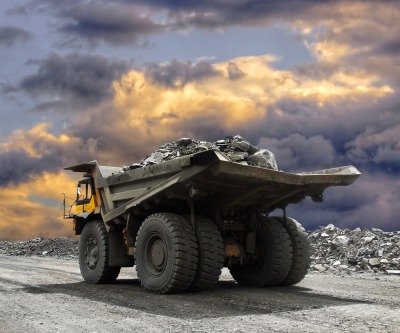
Shares in producers dumped after as China’s crackdown on shadow banking system snares metal-backed trade loans
Benchmark iron ore fell more than 2% on Thursday to fresh lows last seen September 7, 2012.
According to data from the The Steel Index, the import price of 62% iron ore fines at China’s Tianjin port was pegged at $91.50 per tonne, down $2 on the day.
China is responsible for two-thirds of the 1.2 billion tonne seaborne trade and the fresh declines in the price of the steelmaking raw material has been blamed on data out on Thursday showing credit growth in in the world’s second largest economy slowing.
While official bank lending increased, the flushing out of riskier debt in the economy led to an overall decline.
Beijing is clamping down on unofficial financing activities happening outside state-owned banks, the so-called shadow banking system. The use of commodities – particularly copper and iron – as collateral in trade financing agreements makes up a large portion of the unofficial banking sector.
Estimates vary wildly but the portion of iron ore and copper stockpiles at the country’s ports tied up in these deals could be as high as 60%.
Last week’s revelation that authorities are probing whether traders at the port of Qingdao pledged the same copper, iron ore and aluminum inventories as collateral for loans multiple times to different banks could mean and end to practice alltogether.
After a strong first quarter iron ore imports fell back to 77.4 million tonnes in May, down 7.2% from April; a sign that these deals may be unwinding at a more rapid rate than previously thought.
With soft underlying demand, record high stockpiles of more than 100 million tonnes and ample supply of seaborne ore already hurting prices, the dumping of finance-related inventories onto the market is destined to bring further weakness.
Morgan Stanley on Thursday cuts its iron ore price estimate for this year and the investment bank foresees a further drop in 2015. Morgan Stanley forecasts iron ore to average $105 tonne for the whole of 2014 versus a year to date average of $113 a tonne. Back in May, the bank still pegged $118 for this year.
For 2015, when an increase in seaborne supply will more than make up for domestic Chinese production cuts the bank sees iron ore averaging $90 a tonne, a more than one-fifth cut to earlier estimates.
Iron ore is down more than 30% year to date and first declined to double digits mid-May. Attempts at a comeback since then have fallen short.
Apart from that quick gap down in 2012 when the steelmaking raw material spent two weeks below $100 a tonne ore hasn’t traded in double digits at all since 2009 during the financial crisis.
Share prices for the Big 3 – number one producer Brazil’s Vale (NYSE:VALE) and Australian giants Rio Tinto (LON:RIO), BHP Billiton (LON:BHP) – all declined sharply on Thursday, taking huge chunks out of their combined market value of close to $300 billion.
ADRs of Vale lost 3.8% in New York and the Rio de Janeiro-based company is now down 19% in 2014 despite a huge boost from its nickel operations – it’s the world’s number two producer – thanks to a soaring price for the metal used in steel alloys.
Number two Rio Tinto, which thanks to aggressive expansion in its home base of the Pilbara in Northwest Australia have been rapidly closing the output gap with Vale, dropped 3.2% in New York bringing its losses year to date to 9%. Among the diversified giants, Rio is most exposed to iron ore which last year accounted for nearly all its profits.
The world’s number one miner with a market value of $170 billion BHP, which has also been adding to its iron ore business this year even as it sell off assets in other divisions, gave up 1.2% in New York.
In a recent earnings announcement BHP said every $1 decline in the price of iron ore translates into a $120 million hit to the bottom line and the Melbourne-based firm portfolio of assets are not that heavily skewed to iron ore as its peers.
Number four producer behind BHP, Sydney-listed Fortescue Metals Group (ASX:FMG), fell 4.6% in Sydney, but is down 27% this year given that all its ore is shipped to China. From zero production seven years ago is targeting output of annualized 155 million tonnes in 2014.
It was another bad day for North American operator Cliffs Natural Resources (NYSE:CLF) which brought the counter’s losses for the past month to 21%. The Cleveland based firm is idling mines and cutting expenditures amid an ugly boardroom battle.
Anglo American’s ADRs (OTCMKTS:AAUKY) trading in New York declined 3.2%. Apart from a hit from iron ore and copper, shares in the London-based company fell after an end to the strike in South Africa saw platinum group metal prices tank.